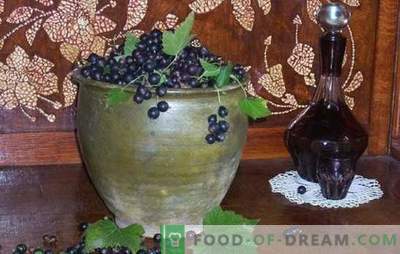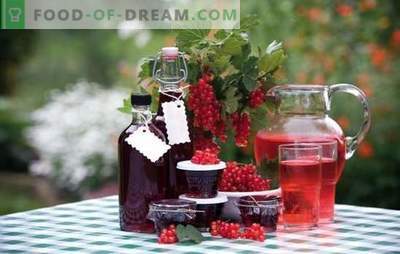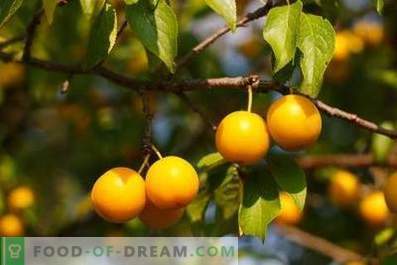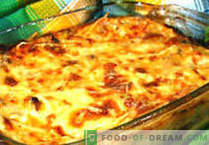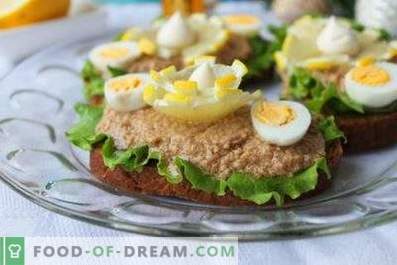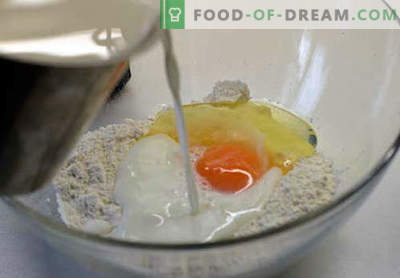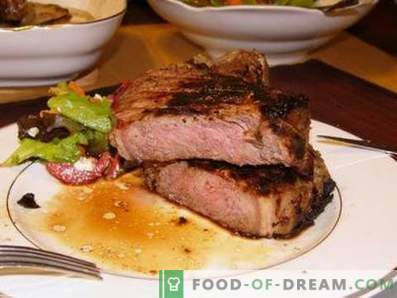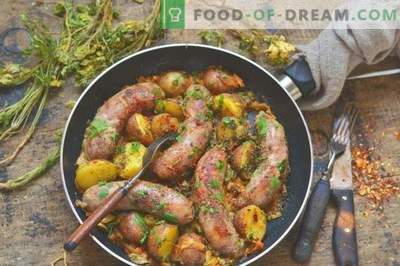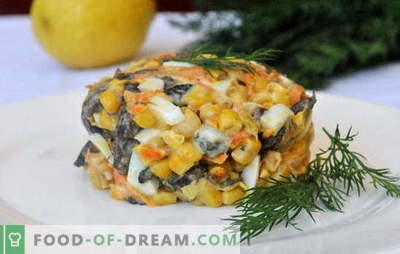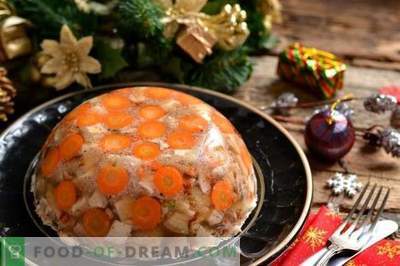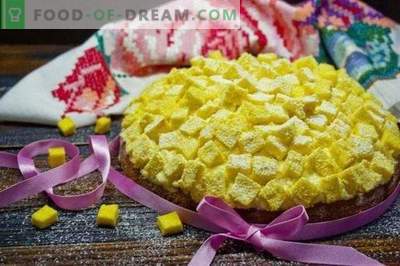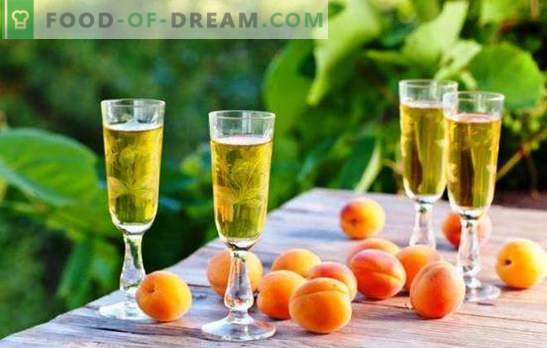
Apricot trees delight in early flowering, mainly from southern latitudes. In the temperate zone, the varietal diversity of these fruits is sharply reduced due to intolerance by the tender plant of cold northern winds. Even in the warm southern regions of the country, their harvest may tend to zero with the slightest breeze of cold wind during their flowering. But every owner of a summer cottage in the southern regions of the country seeks to plant an apricot tree, and when the early spring does not present unpleasant surprises in the form of frosts and a burning icy wind, apricot trees fall asleep with the summer villages. That's when it comes time apricot blanks. There is already jam, jam and dried apricots, and frozen berries, and there are still a lot of berries on the tree. Summer residents - homely people, economic. Someone one will remember that in the old days we made apricot vodka and, you see, the whole village together is engaged in the manufacture of alcoholic beverages based on apricot.
In addition to apricot vodka, you can get good wine from apricots. Better manage dessert and liqueur homemade apricot wines that have sufficient strength for aging. Of the features for those who like a subtle apricot aroma, it should be noted that it would not be bad to add alcohol extracts from the same fruit to the recipes of wine from apricots, because apricot smell is almost not manifested in wine. And the fans of “Amaretto” will be interested to know that the famous liqueur has an almond smell due to the apricot kernels, and that a small amount of them in the liqueur or homemade apricot wine will decorate the taste completely without harm to health.
Homemade apricot wine - the basic technological principles
Any home winemaker will say that in the process of making wine, there is essentially nothing complicated, and that every time the main stages are repeated. It:
- Preparation of the harvested wine material - fruits and berries, which must be picked before the morning, technically mature, sorted. But it is not recommended to wash the wine material in order to preserve colonies of wild yeast on their surface. Sometimes, for the preparation of dry and semi-dry home wines, wild yeast may well replace specially grown wine yeast, which is called cultured.
- The next stage is the preparation of pulp or juice. As we are talking about home-made apricot wine, the following can be said for these berries:
After removing the seeds, 10 kg of apricots can produce no more than 7 liters of juice, and not more than 6.4 liters from wild apricots with thicker flesh. To reduce the loss of raw materials in the preparation of berries for wort, it is recommended to imitate them. To do this, pulp is crushed, add sugar and a small amount of water. Water is added to make simple table wines. For dessert and liqueur wines, pulp is combined with sugar without adding water. An imitation improves the secretion of juice. The resulting mass is squeezed and wort is prepared from the juice.
- Further, the composition of the juice is determined. It is important that the acid content in it be balanced, including tannic, sugar, which is important both during the fermentation of the wort and affects the quality of the wine and its storage. The acidity rate is 0.7-0.8%. The permissible upper limit of the norm is 1.2%, and for strong, dessert and liqueur wines - 1.5%. In preparing the wort, these figures should be somewhat higher, since the acidity decreases during the fermentation process. As for tannic acid (tannin), which can be purchased at the pharmacy, thanks to this component, the wine becomes transparent upon clarification, and subsequently, during storage, remains stable. Also, tannin affects the taste of wine.
- Special attention should be paid to sugar when preparing the wort. A certain amount of it is necessary for the successful operation of the yeast, which in the process of its processing forms alcohol and carbon dioxide. This is the essence of fermentation. Sugar is added to the wort, taking into account the natural sugar content of the fruit. To get the wine of the desired strength is added a greater amount of sugar. However, it must be remembered that with a total sugar content of the wort of more than 20%, the yeast slows down significantly, and at 50% of the sugar in the wort, fermentation stops and the yeast dies. With a sugar content of less than 10%, good fruit vinegar can be obtained, with a strength of no more than 6%, since acetic acid bacteria settle much faster in acidic wort, and the yeast in such an environment feels uncomfortable with wine. It is possible to increase the sugar content in the wort, but only gradually, adding it as it is processed by yeast, which allows increasing the strength of the wine, although it prolongs the fermentation process over time. Further stages do not represent a great technological difficulty in making homemade wine from apricot, but only require time and patience.
- After the end of fermentation the preparation of wine consists in removing it from the sediment, clarifying and pasting (adding tannic acid or other components), pouring, sweetening and aging.
- Final phase - bottling wine or storing it in large containers. Although with small, one might say, experimental volumes, domestic winemakers do not have to bother too much with storage issues, but I must say that wine should be cared for if there is a goal to create your own recipe for apricot wines. During storage, attention should be paid to the cleanliness of the packaging, humidity and acceptable room temperature. Acceptable temperature can be completely different values of the mercury column, depending on the type of wine. Be sure to periodically try the wine in storage, spend perelivku.
1. Simple recipe for apricot wine
Composition:
- Apricots 11 kg (net weight)
- Water 2.6 liters
- Sugar 3.0 kg
Cooking:
For wine, it is better to use just plucked ripe, but not overripe fruit, with no visible contamination. Remove the bones and mash the berries. Fill them with sugar and add warm water to the enamelled container. Stir the mass and, covering it, set at 20-25 ° C before fermentation. Squeeze out the juice with a press and pour into a bottle with a narrow neck. Install a water seal. For further fermentation, the bottle should be kept at a temperature not higher than 22 ° C, in the absence of drafts and direct sunlight.
After about two months, the fermentation will completely stop. The thick will settle on the bottom and the apricot wine should be freed from sediment. Remove it using a plastic flexible tube, pumping it into a clean dish. Wash the bottle, dry it and pour the wine back into it for aging at 10-14 ° C. If sediment forms again at the bottom, then repeat the removal to achieve absolute transparency.
2. Strong homemade apricot wine of the garden variety
Composition:
- Juice, apricot 8 l
- Water 1.0 l
- Sugar 1.8 kg + 0.9 kg (for stabilization)
- Wine yeast 3 g
Cooking Technology:
Combine the juice with water to reduce the acid content. Add the bulk of the sugar. And stir it until dissolved. The juice can be slightly warm. But you can add yeast only when the temperature of the finished wort becomes comfortable for them - not less than +18 degrees and not higher than +22 degrees.
Follow the processes occurring in the wort. Foaming the surface of the wort - a signal of the beginning of fermentation and that everything was done correctly. Pour the wine into the bottle, seal the neck of one of the most convenient ways: tongue, water shutter or medical glove with a finger pierced in it.
After the fermentation stops completely, remove the young wine from the sediment and add the second part of the sugar. Again, pour the wine into a clean bottle and transfer it for aging in a cool place, with a constant temperature not higher than +14 degrees. At this temperature, yeast stops working. If the live yeast remained in the young wine, they will settle to the bottom of the tank along with the thick. Wine while you need to re-remove from the sediment. The sugar added after fermentation after aging will give the taste of wine and make it more stable, prevent the appearance of mold on the surface.
3. Recipe for apricot wines of forest (wild) varieties
Composition:
- Sugar 3.2 kg
- Tannic acid (tannin) 15 g
- Mashed potatoes, apricot 5.6 kg
- Water 2.7 L
- Apricot tincture, home (40%) 0.7 l
Cooking:
Simultaneously with the preparation of the wort, preparing apricot tincture. For tincture, it is better to take garden apricots with the most intense aroma.
A kilogram of berries should be separated from the seed, chopped with a blender and add 0.5 liters of vodka. Cork the mixture with a jar and keep it in the kitchen, in plain sight: while the wine mash will ferment, the tincture must be periodically shaken to improve the quality of the extraction.
To get apricot puree you need at least 10 kg of wild apricots. Wild berries have a high density, which makes it difficult to obtain juice. They contain almost two times more acid than garden apricots, but the increased content of essential oils in wild apricots allows you to get a more aromatic homemade wine from apricot. Therefore, to prepare the wort, wild apricots are ground in a puree, topped up with water. The resulting mass is combined with half the desired amount of sugar and fermented, leaving the prepared wort at 25 degrees until foam appears on the surface. Be sure to cover the container to protect against contamination. You can not keep the wort in a wet room, in order to avoid mold, which is very susceptible to berries. After the start of fermentation, squeeze the juice and pour it into the bottle. Close the water shutter. Now the temperature should be 3-5 degrees lower until the end of fermentation. Try to maintain the same temperature conditions necessary for the productive work of wine yeast. After the phase of rapid fermentation, add the rest of the sugar, re-install the valve, now until the fermentation stops and sedimentation at the bottom of the bottle stops. Carefully pour the wine into a clean and dry container. At the same time, you can filter the apricot tincture and combine it with wine removed from the sediment. Stir the wine and pour it into the bottle again. Seal and take to the basement for aging (at least 3 months). Check the wine every two weeks. Repeat the sediment if necessary.
4. Simple recipe for dessert apricot wine
Composition:
- Garden apricots 13.5 kg
- Sugar 3.3 kg
- Tanning acid 12 g
- Tartaric acid 7 g
Preparation Procedure:
Selected berries are sorted, removed with a brush of pollution (do not wash). After removing the bones, the apricots are crushed. Several stones (20-25 pieces) can be crushed and the extracted kernels can be added to the pulp to give the future wine an almond shade. In small quantities, they will not harm the body. Sugar divided into three parts. Add the first part to the pulp, mix. At the same time, you can add tartar. Place the fermentation mash, first for 10-12 hours, to make the juice stand out, and when this happens, squeeze it under pressure, removing the cake and pour it into the bottle. Close the neck with a water shutter.
The second part of sugar can also be divided into three parts and added to the fermenting wort in portions, as it is processed by yeast, in 7-10 days. This technique will keep the yeast in good shape, forcing them to work more actively. The positive point of such a separation of sugar is that the strength of the wine will be higher, and during aging it will lighten more quickly and will not become cloudy during storage. The wort will ferment longer, but winemaking does not tolerate haste. Do not forget to stir up gradually forming sediment with each sugar addition, since it contains the most “lazy and weak” yeast that can still work: let them participate in the formation of alcohol when freshly fed with sugar.
When the bubbling stops completely or it seems to stop, remove the wine from the sediment, add diluted tannin (for clarification and stabilization). Pour the wine into a clean bottle again, but this time fill it to the top, leaving no more than 3-5 cm to the edge of the neck. From this point on, the care for young homemade apricot wine consists in pouring it and removing it from the sediment to perfect transparency.
Add a third of the sugar and keep the sweetened wine at room temperature, if you can't wait to taste it with friends. At room temperature, the sugar will dissolve faster and create a full bouquet of an already ripe drink. Now it is possible to pour into sterile bottles, seal with stoppers and remove for storage in the basement.
5. A simple recipe for apricot wine. Liqueur wine
Composition:
- Wild and garden apricots (1: 1) 11.0 kg
- Tartar 24 g
- Tannin 24 g
- Sugar 6.3 kg
- Vodka (40%) 0.7 l
Cooking:
Preparation of berries and further technology for the production of liqueur wine described in the previous recipe. The main difference lies in the fact that the pressed fruit pulp, in which there is still a lot of valuable things, is poured with vodka, mixed and kept until the time when the third part of sugar is added to the clarified wine for sweetening. Strain the tincture through a thick cloth and squeeze well. Add it to the wine. Exposure should be carried out for 2-3 months at room temperature. At this time, the care of liqueur wine is transfused to improve the bouquet. After pouring the wine into bottles and put it in a cool dark place for storage.
6. Recipe for apricot and raisin wine
Composition:
- Raisin, white 1.0 kg
- Apricots, dried 5.0 kg
- Sugar 1.5 kg
- Yeast, wine 3 g
- Juice, grape (unclarified) 6.0 l
- Nutmeg
- Water 1.5 L
- Citric acid 15 g
Cooking:
Unusual wine can be prepared even in winter, if during the season were dried fruit and juice. However, raisins and dried apricots can be bought, but it will be expensive. And drying apricots and grapes (it is advisable to make a variety of kishmish) is quite a simple matter. Selected berries need to be spread out in a thin layer on a baking sheet and gently pitch in the oven, preheating it to 50 degrees and then turning it off. After dry on the grids in the shade. This can be done outdoors. We need a light draft, minimum humidity and a gauze frame to protect against insects.
Now about cooking delicious wine. Dried fruits should be chopped and put in the bottle. Dissolve sugar in grape juice, add water and citric acid. Slightly warm the prepared wort and dissolve the yeast in it. Pour into a bottle and place it in a certain place where a constant temperature will be maintained. Set the shutter and wait for the fermentation to cease no earlier than in 2 months. Remove the wine from the sediment, pour and put in the bottle the whole little nutmeg. In the process of subsequent aging, spend a regular transfusion of wine, putting a fresh nutmeg each time in the bottle. Six months later, the wine can be bottled.
Homemade apricot wine - tips and tricks
- Do not store homemade wine on the lees, which is, in addition to small particles of fruit, wine yeast that died after the fermentation process was completed. They will give a bitter taste to the wine if left in the bottle.
- Do not use plastic flasks for fermentation and storage of wine. It is convenient, but harmful. Acids contained in wort and in wine when interacting with plastic dishes partially dissolve harmful compounds. This not only adversely affects the taste and bouquet of homemade wine, but also harms health.
- Ready homemade wine should be kept tightly corked. Domestic wine is not necessarily bottled, but when stored in glass bottles, make sure that when storing it does not get moisture and odors.
- To get a stronger dessert wine, you can add wine yeast to the wort, which must be prepared 4-5 days before receiving the juice and preparing the wort. Yeast is diluted in warm water (20-25 degrees). 250 ml add one drop of a solution of ammonium salts 1/2 teaspoon of sugar daily, to feed the wine yeast. Then this mixture is poured into the finished wort and the yeast continues to develop in it.



